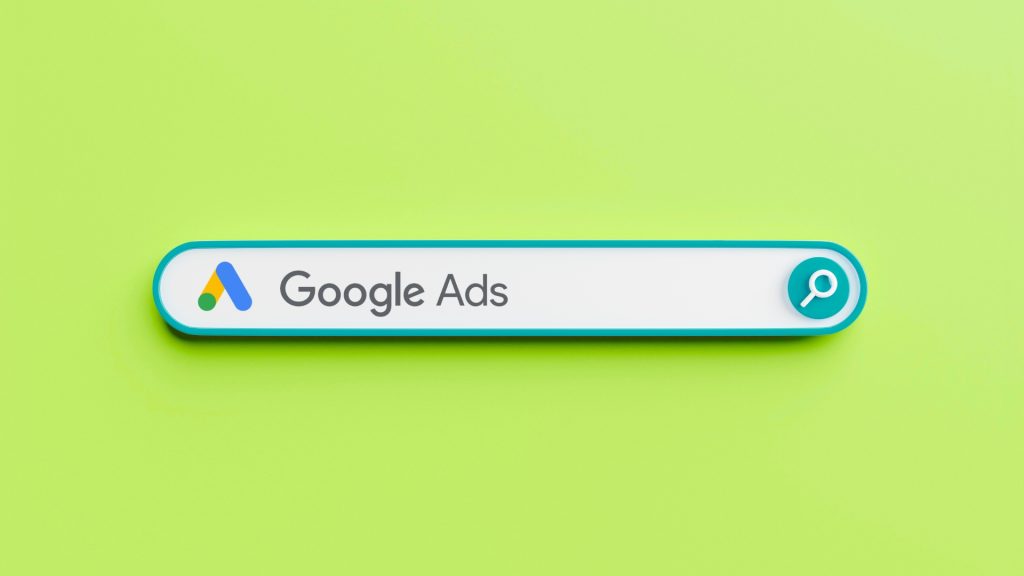Google Ads is a powerful advertising platform that can take your campaigns to incredible heights. But without the right navigation, you might just end up burning fuel and missing your destination. Think of this guide as your mission control, helping you fine-tune your ads so they hit the perfect audience, at the right time, with the right message. Remember, Google Ads optimization isn’t just about getting clicks, it’s about getting the right clicks—the ones that actually lead to results.
Core Optimization Strategies
With a focus on advanced techniques in campaign structure, bidding, audience targeting, and performance monitoring, these strategies will help you reduce costs while improving conversions and overall ad effectiveness. Get ready to take your Google Ads optimization to the next level.
1. Single Keyword Ad Groups (SKAGs): Laser-Focused Targeting
SKAGs are like the secret weapon of ad relevance. By zeroing in on one keyword per ad group, you can deliver hyper-relevant ads that your audience can’t ignore.
How to Set It Up:
- Create separate ad groups for each keyword you want to target.
- Write ad copy that perfectly matches the search intent behind that keyword.
- Use keyword match types like exact, phrase, and broad match modified to fine-tune targeting.
Optimization Hacks:
- Keep an eye on your Quality Score and ensure your landing pages match your ad content.
- Run A/B tests regularly to find winning ad variations.
- Track metrics like CTR, conversion rates, and cost per conversion to identify what’s working (and what’s not).
2. Smart Bidding Strategies: Work Smarter, Not Harder
Choosing the right bidding approach is like setting the GPS for your campaign—it’ll determine whether you hit your destination efficiently or veer off course.
Manual Bidding Tips:
- Adjust bids using historical data and keep tabs on competitor trends.
- Optimize based on device performance—what works on mobile might flop on desktop.
Automated Bidding Tips:
- Use Target ROAS (Return on Ad Spend) or Maximize Conversions to let Google’s AI work its magic.
- Regularly check conversion rates and costs to ensure the AI stays on track.
3. Remarketing Lists for Search Ads (RLSAs): Bring Them Back
RLSAs are like rolling out the red carpet for people who’ve already checked out your website. With custom ads that cater to their needs, you can turn visitors into customers.
How to Nail It:
- Segment your audiences based on actions they’ve taken (or not taken) on your site.
- Boost bids for high-value visitors like cart abandoners or frequent browsers.
- Use exclusion lists to weed out people who aren’t likely to convert anymore.
4. Income-Based Targeting: Follow the Money
Why target everyone when you can focus on those most likely to convert? Income-based targeting lets you tailor your ads to high-value prospects.
How to Maximize It:
- Adjust bids to favor income brackets that bring higher returns.
- Craft ad messaging that speaks directly to their needs—whether it’s luxury or affordability.
- Keep an eye on ROAS for each income group and tweak accordingly.
5. Maximum CPC Management: Spend Smarter, Not More
Controlling your Cost Per Click (CPC) is like setting a budget cap for a shopping spree—you’ll avoid overspending while getting the most bang for your buck.
How to Master It:
- Use historical data and industry benchmarks to set realistic CPC limits.
- Automate bid adjustments based on live conversion rates to maximize efficiency.
- Keep an eye on your budget and reallocate funds to campaigns that perform the best.
6. Advanced Dayparting: Be There at the Right Time
Dayparting is all about showing up when your audience is most likely to convert. Think of it as scheduling your ads for “prime time.”
Execution Tips:
- Study conversion trends to find out when your ads perform the best (e.g., mornings, lunch breaks, evenings).
- Increase bids during peak hours to prioritize high-conversion windows.
- Adjust schedules for seasonal trends, like holiday shopping sprees or weekend traffic.
7. Device-Specific Optimization: Desktop or Mobile? Why Not Both!
Different devices mean different user behaviors, so tailoring your ads by device is a no-brainer for better performance.
Steps to Optimize:
- Analyze your conversion rates by device to find out where your audience is engaging most.
- Create separate campaigns for mobile and desktop, each with device-specific messaging.
- Optimize mobile ads to accommodate quick actions, while desktop ads can focus on more detailed offers.
8. Dynamic Keyword Insertion (DKI): Let the Keywords Do the Talking
DKI makes your ads extra relevant by automatically inserting the exact keywords users are searching for.
Pro Tips for DKI:
- Always set fallback text in case keyword insertion fails. No one wants awkward ad copy!
- Format your keywords properly to maintain readability and professionalism.
- Monitor ad relevance scores and adjust as needed to stay aligned with user intent.
9. Negative Keyword Management: Block the Time Wasters
Negative keywords are your shield against irrelevant searches that drain your ad budget.
How to Use Them Wisely:
- Perform regular search term analysis to identify irrelevant queries.
- Maintain a structured, tiered negative keyword list for different campaign levels.
- Keep an eye on how much you’re saving and refine your list for even better results.
10. A/B Testing for Ads: Experiment, Improve, Repeat
A/B testing is like science class, but way more fun and profitable. Test, tweak, and thrive!
Best Practices:
- Test ad variations with different headlines, CTAs, or offers.
- Focus on impactful elements like your main message and visuals to boost CTR.
- Only declare a winner when results are statistically significant. No guesswork here!
11. Location-Based Bid Adjustments: Local Is the New Global
Fine-tune your ads by region to resonate with audiences who live there.
Steps to Dominate Locally:
- Pinpoint high-performing regions and increase your bids in those areas.
- Write ad copy that speaks directly to local culture or needs. Be relatable!
- Monitor the performance of each location to ensure you’re not overspending.
12. Call-Only Campaigns: Drive Phone-Based Conversions
If your business thrives on phone calls, optimizing for call-only campaigns is your secret weapon.
How to Do It Right:
- Track call metrics to pinpoint peak hours and prioritize bids during those times.
- Craft ad copy that encourages immediate action, like “Call Now for a Free Consultation!”
- Align your ad messaging with user intent, ensuring the transition from ad to call is seamless.
13. Responsive Search Ads (RSAs): Let Google Work for You
RSAs allow Google’s machine learning to tweak your ads for maximum relevance and performance.
Pro Tips for RSAs:
- Submit multiple headlines and descriptions for Google to mix and match.
- Pin critical messages that should always appear, like your unique selling proposition.
- Regularly review asset performance to identify high-performing combinations.
14. Landing Page Optimization: Where Conversions Happen
Your landing page is the final step. Make sure you make it count.
Key Focus Areas:
- Boost page speed and ensure mobile responsiveness for a smooth user experience.
- Mirror your ad copy on the landing page to maintain consistency.
- Use eye-catching CTAs like “Get Your Free Quote Now” to guide user action.
15. Audience Targeting Refinement: Reach the Right People
Stop wasting your budget on the wrong audience by refining your targeting strategies.
Techniques to Try:
- Segment audiences by behaviour, such as time spent on your site or repeat visits.
- Utilize lookalike audiences to find new prospects similar to your top customers.
- Monitor audience overlap and remove redundancies to maximize efficiency.
16. Customer Match Strategies: Tap Into First-Party Data
Customer Match lets you personalize targeting using your existing customer database.
How to Leverage It:
- Upload your customer lists to Google Ads for precise targeting.
- Adjust bids to favor high-value customers based on lifetime value.
- Craft custom ad copy tailored to past customer behavior.
17. Micro-Conversion Tracking: Measure the Small Wins
Sometimes, the little actions lead to the big ones. Track them all.
Implementation Steps:
- Set up tracking for actions like form submissions, video plays, and sign-ups.
- Use micro-conversion data to tweak bids and improve targeting.
- Analyze trends to predict and drive future conversions.
18. In-Market Audiences: Capture Ready-to-Buy Users
In-market audiences target users actively researching similar products or services.
Steps to Maximize ROI:
- Layer in-market audience targeting with high-performing keywords.
- Adjust bids based on intent signals, like frequent searches for related products.
- Customize your ad messaging to appeal directly to each in-market audience.
19. Ad Rotation Optimization: Always Show the Best Ads
Don’t let underperforming ads steal the spotlight—rotate smarter.
Optimization Tactics:
- Use Google’s “Optimize” ad rotation setting for automatic prioritization of top-performing ads.
- Regularly refresh your creatives to avoid ad fatigue.
- Experiment with new variations to keep improving.
20. Custom Intent Audiences: Target Intent on the Display Network
Custom Intent Audiences help you zero in on users showing specific search intent.
Actionable Tactics:
- Research intent-based keywords and relevant URLs.
- Create ads that directly address your audience’s needs and interests.
- Segment campaigns to deliver highly personalized messaging.
21. Time Lag Conversion Analysis: Value the Late Bloomers
Not all conversions happen immediately. Take into account for delayed actions.
How to Adjust:
- Use attribution models that consider longer conversion cycles.
- Optimize bids for delayed conversions to ensure you capture late-stage buyers.
- Regularly analyze time lag reports to refine your strategy.
22. Display Network App Exclusions: Stop Wasting Budget
Keep your Display Network spend focused by excluding irrelevant app placements.
Steps to Implement:
- Review placement reports to spot low-performing or irrelevant apps.
- Exclude entire app categories that don’t align with your goals.
- Monitor performance to keep optimizing for efficiency.
23. Performance Optimization Schedule: Stay Consistent
Optimization isn’t a one-time thing. Make it a habit.
Weekly Tasks:
- Review KPIs like CTR, conversion rate, and ROAS.
- Tweak bids, targeting, and creatives based on recent trends.
Monthly Tasks:
- Dive into audience insights to discover new opportunities.
- Experiment with new ad formats or strategies.
- Reallocate budgets to reflect seasonal or market changes.

Optimizing Google Ads is an ongoing journey. A blend of effort, testing, and refinement. By employing these strategies, you can significantly boost campaign performance, maximize ROI, and achieve outstanding results. Remember, optimization is not a one-time task; it’s a continuous process of learning, adapting, and staying ahead of the competition. Ready to take your campaigns to the next level? Contact Canin Group today and let us help you turn your goals into reality. Watch as your campaigns deliver the success you’ve always envisioned!





